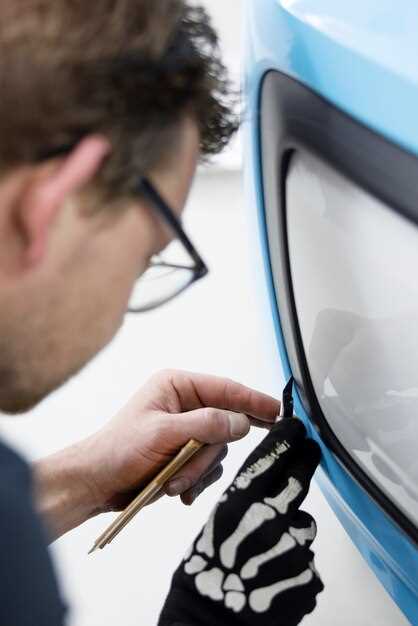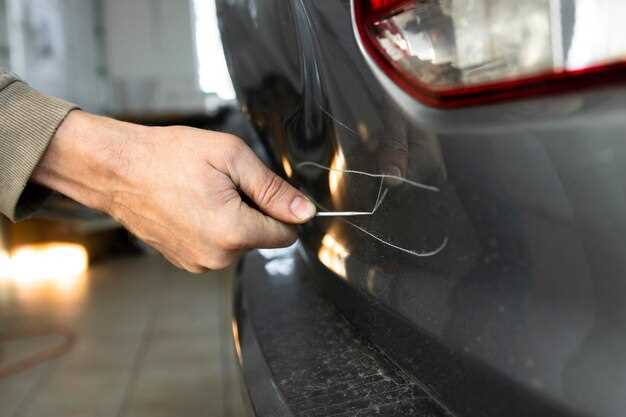
Dealing with small dents on your car can be a frustrating experience. These minor imperfections not only affect the appearance of your vehicle but can also decrease its resale value. However, the good news is that repairing these dents doesn’t have to be a time-consuming or costly process. With the right techniques and tools, you can restore your car’s pristine look without the need for professional help.
In this article, we will explore various methods to effectively repair small dents, making it easier for any car owner to tackle these issues head-on. From using household items to specialized tools, you’ll find solutions that cater to different preferences and skill levels. Whether you prefer a DIY approach or are looking for quick fixes, there’s something here for everyone.
Understanding the different types of dents and the appropriate repair methods is crucial for successful results. We will cover how to assess the damage, choose the right technique, and achieve a smooth finish that makes your car look as good as new. Get ready to roll up your sleeves and dive into the world of auto body repairs with confidence!
Identifying the Type of Dent and Required Tools

Before embarking on the repair process, it’s essential to identify the type of dent on your car. Dents can be classified into three main categories: shallow, deep, and creased. Shallow dents are often minor and can be repaired using simple techniques. Deep dents penetrate the paint and may require more extensive repair methods. Creased dents, characterized by sharp lines and folds, can be challenging to fix without professional help.
Once you’ve identified the type of dent, gather the necessary tools for repair. For shallow dents, you may need a hairdryer, a can of compressed air, or a specialized dent repair kit that includes a suction cup. These tools help manipulate the metal back into place. For deeper dents, a slide hammer or body filler may be required, along with sandpaper for smoothing the surface. In cases of creased dents, a dent pulling tool set could be beneficial.
Having the right tools on hand is crucial for an effective repair process. Identify the specific requirements based on the dent type to ensure a smoother and successful repair experience.
Step-by-Step Guide to Using the Hot Water Method
The hot water method is a popular diy technique for repairing small dents in your car. This method takes advantage of the malleability of metal when exposed to heat, allowing you to reshape the dented area. Follow these steps to effectively use the hot water method.
Step 1: Gather Your Supplies
Before starting, ensure you have all necessary materials. You will need a kettle or pot for boiling water, a container to catch the water, rubber gloves, and a towel for cleaning up any spills. Additionally, a cold spray or compressed air can be useful for the final step.
Step 2: Boil Water
Begin by boiling a sufficient quantity of water. The amount depends on the size of the dent you are working on. You want enough to thoroughly soak the affected area of the car’s panel.
Step 3: Apply Hot Water
Once the water reaches a rolling boil, carefully pour it directly onto the dent. Make sure to saturate the area completely. It’s important to wear rubber gloves to protect your hands from burns during this process.
Step 4: Push Out the Dent
After applying hot water, use your hands or a soft cloth to gently push from behind the panel. If the dent is accessible, apply even pressure to reshape the metal back into its original form. For more stubborn dents, you may require a tool designed for diy repairs.
Step 5: Cool the Area
Once you have reshaped the dent, quickly spray the area with cold water or use a can of compressed air held upside down. This will help harden the metal and keep it in its new shape.
Step 6: Clean Up
Finish by cleaning the area with a towel to remove any excess moisture. Inspect the dent to see if further adjustments are needed. If the repair is successful, your car should look much better without the unsightly dent.
Finishing Touches: Polishing and Touch-Up Paint Techniques

Once you have successfully repaired small dents on your car using various DIY methods, it’s essential to apply the finishing touches. This ensures that your car not only looks great but retains its value over time. Primary techniques involve polishing and using touch-up paint effectively.
Here are the steps you should follow:
-
Gather Your Supplies:
- Polishing compound
- Microfiber cloths
- Touch-up paint matching your car’s color
- Clear coat (if needed)
- Fine grit sandpaper
-
Polishing the Area:
Once the dent is repaired, use a polishing compound to restore the shine to the affected area. Apply a small amount of polish onto a microfiber cloth and gently rub it in a circular motion. This helps to blend the repair area with the surrounding paint.
-
Assess the Damage:
Inspect the dent area carefully. If the repair has left any uneven spots or scratches, follow up with fine grit sandpaper to smooth out the surface. Be gentle to avoid damaging the paint further.
-
Applying Touch-Up Paint:
Using the touch-up paint, fill any small chips or scratches. Apply in thin layers, allowing each layer to dry completely before adding another. This builds up the color gradually and ensures a smooth finish.
-
Sealing the Repair:
If your touch-up paint requires it, apply a clear coat to protect the newly painted area. This adds a layer of protection against the elements and helps blend the repaired area further.
-
Final Polish:
After the touch-up paint and clear coat have dried, give the area a final polish. This enhances the shine and ensures consistency with the rest of your car’s surface.
By following these techniques, you can effectively complete the repair of small dents on your car, ensuring it looks as good as new. Remember to take your time during each step for the best results.




